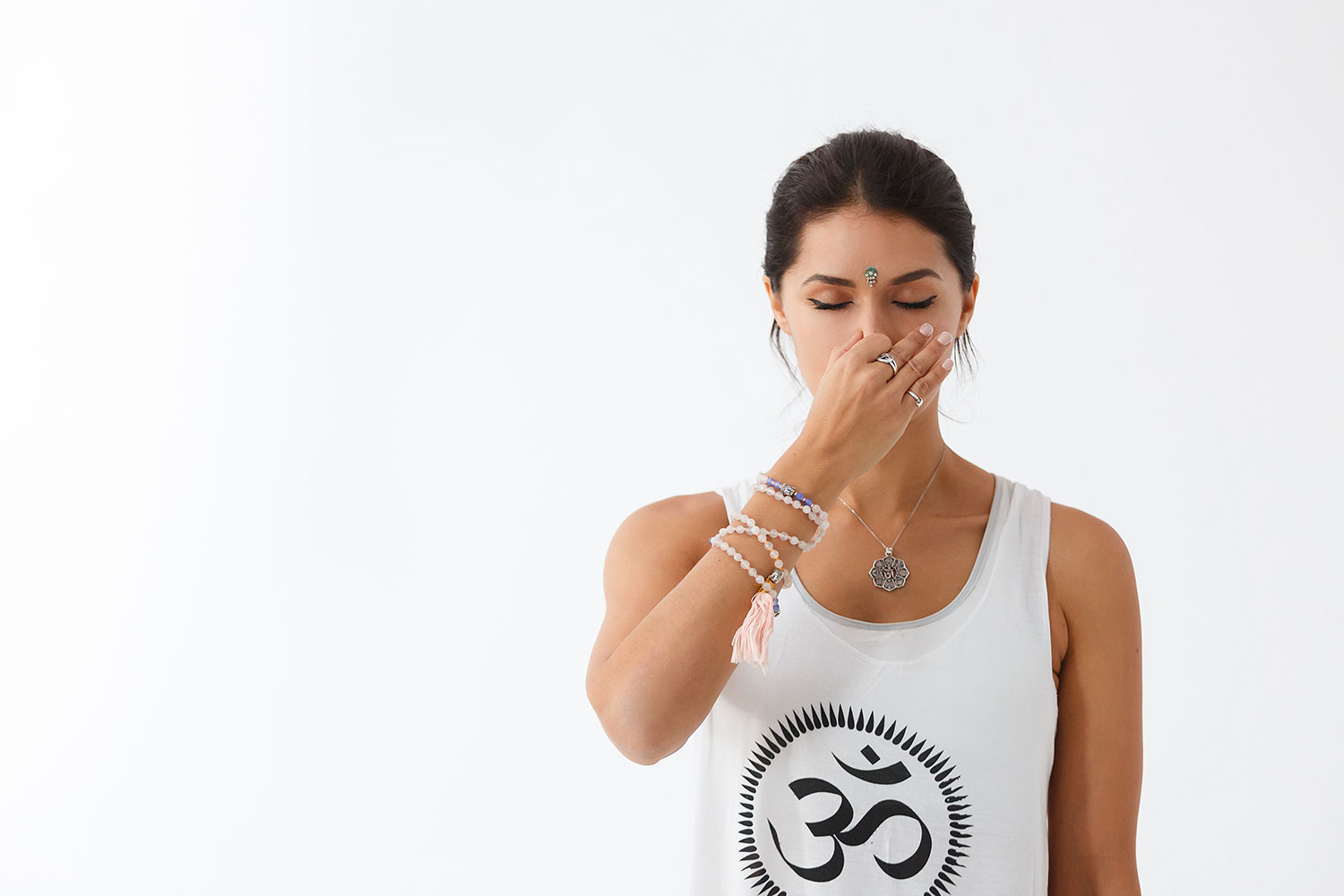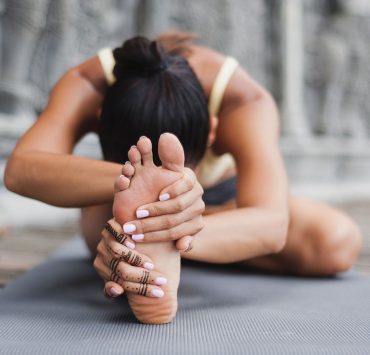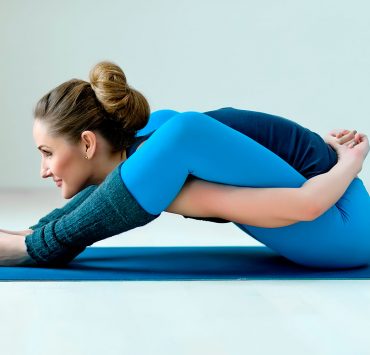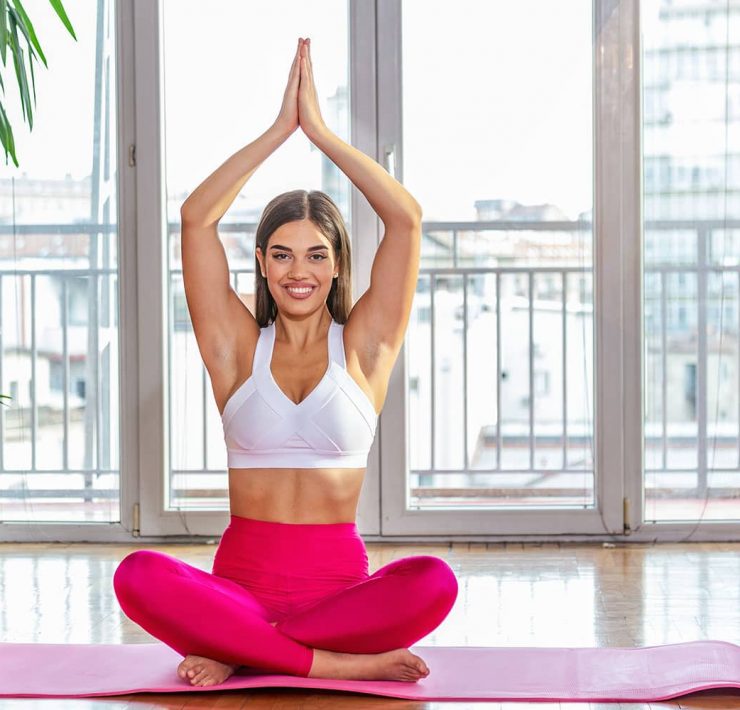
After spending nearly two decades as a relationship therapist, Patricia…
It’s no secret that yoga offers numerous attractive health benefits, including increased flexibility of body and mind. Some of the science behind yoga’s influence on our emotional well-being remains speculated, but recent studies reveal the effects all those downward dogs have on the brain. There’s no denying the mental clarity and peace that grows from consistent physical practice and sustained effort off the mat.
As yoga becomes an integral part of our day, we spring to extend that wisdom to the rest of our life. Experiencing life through the lens of yogic philosophy is an undeniable source of happiness and well-being that radiates outward from the center of our being. This radical life change requires dedication to the practice and surrender to the process, but what many don’t realize is the transformation that takes place under the surface without conscious control.
The inner workings of our brain are adapting to this new routine and line of thinking, leading to healthier sustainable behavior. Beyond the adaptation of our mind, yoga nourishes the neurological functions of our brain in lasting ways that encourage vitality.
Breath Awareness

Have you ever noticed that when you’re stressed, anxious, or nervous, your breathing becomes shallow or rapid? If the answer is yes, then you may have also noticed that joyful, calm, and relaxed feelings invite naturally steady and wholesome breath. That’s the functioning of our sympathetic and parasympathetic nervous systems in return to different scenarios.
Our sympathetic nervous system, also known as our fight or flight response, brings alertness and clarity during moments where we may feel threatened or tense. The parasympathetic nervous system is how our body moves into tranquillity and rest. Our body and brain exchange information that enables us to travel between these two reactions effectively. This phenomenon often occurs subconsciously, but yoga gives us the tools to recognize and address our breathing patterns before they completely take over our mental state. By becoming mindful of our breath, we welcome a heightened sense of self-control during challenging situations.
Pranayama

Yogic breathing exercises promote mindfulness surrounding the thoughts and behaviors that affect our quality of life. Consciously deep breaths establish the connection between our body and mind, reminding us to slow down and check in. This attention to maintaining equal and opposite inhalations and exhalations requires keen focus, which can improve cognitive functions in the brain over extended periods of time. It’s like exercise for the mind that increases the longevity of our mental capacity and awareness. Deep breathing techniques also strengthen the diaphragm and lungs, enhancing oxygen absorption, and ultimately improving the flow of oxygen to the brain. Another breathing technique, known as alternate nostril breathing, is promoted as a method for balancing the two hemispheres of the brain. Science hasn’t established the validity of its influence on the brain’s hemispheres, but it has confirmed a reduction in blood pressure related to an activation of the parasympathetic nervous system. Studies also show that this practice raises attention and performance of motor skills while building respiratory health and durability.
Intuition

Yoga teaches us to trust our instincts and recognize what’s best for our being in any given moment. This wisdom stems from a heightened perception of self with respect for our mental and physical boundaries. It’s crucial to acknowledge this intelligence during practice as it can help avoid injury caused by pushing further when the body wanted to let go. Deep within our intestines and gut live 100,000 neurons and more than 30 neurotransmitters that exist to release a variety of hormones. These signals are honest reflections of our deepest intuitions that are sometimes more reliable than the speculative outcome produced by the brain. By trusting ourselves in yoga, we nurture this relationship to our intuition and begin to make beneficially wise decisions.
Happiness

Living in the moment brings not only profound clarity to our current reality but also raises overall happiness. Far too often people are lost in thoughts pertaining to past woes or potential future struggles, inhibiting them from living in the now. Thinking ahead and pondering the past become negative when these thoughts overpower what we’re actively doing.
Psychologists at Harvard University studied the effects of this daydreaming on overall well-being and found it to be detrimental to our satisfaction with life as it is. Yoga continually challenges us to stay focused on the present and resist the urge to let the mind wander. Movement allows us to notice the moments in between postures, rather than quickly traveling from point A to point B. Conscious breathing is a method for keeping the brain focused on a single function while tuning out everything else. This practice slowly becomes part of our regular existence and prompts us to notice the world around more freely.
Calm State Of Mind

When we release stress through yoga and meditation practices, we improve our brain’s ability to perceive, respond, comprehend, and function. The mind requires nourishment just as other parts of the body do to operate effectively, and yoga is an excellent way to show this mental powerhouse some love. Not only does it teach us methods for combatting stress and anxiety, but it also demonstrates how to encompass serenity. Harvard Health published that “By reducing perceived stress and anxiety, yoga appears to modulate stress response systems.” This newfound calm translates into the body as lower heart rate and blood pressure with increased respiratory function.
We eventually become healthier and more resilient towards future obstacles by applying the philosophies of yogic theory. This wisdom grants more significant control over thoughts and emotions as they come, allowing us to address them individually and recognize whether they’re beneficial or not. Slowing down to tune in is no easy task and requires a lot of practice, so sh patience as you ease into a calmer state of being.
Aging Process

Many survivors of traumatic life events seek yoga for its ability to heal and rehabilitate the body and mind. The components of the brain that are most profoundly influenced by trauma can become regulated through a regular yoga practice. This action enables people to cope with adverse experiences and move forward to live a prosperous life.
Yoga also benefits individuals as they grow older by stimulating creativity and opening the mind to new ideas. By consistently trying different things and challenging ourselves, we’re creating new neurons and neural pathways in the brain. Over time this positively affects the way we think and leads to a reduction in depression and anxiety. Lastly, yoga requires a great deal of concentration and active memory to stay focused in the moment.
A study on older women demonstrated that consistent yoga practice led to an improved cognitive function. Another study revealed that people who engaged in meditation and kundalini yoga had significantly higher rates of memory and emotional resilience. Whether it’s physical or mental flexibility you need, yoga has been proven an excellent resource for supporting youth in all realms.
Stress Release
Physical

Supported Corpse PoseThere’s no denying that stress translates physically in the body as a host of unpleasant sensations. A crick in the neck, irritable bowels, and tightness through the hips are just some of the manifestations of raised stress. Not only does yoga help alleviate these bodily symptoms, but it also helps us avoid letting them get out of control by better managing stress as it comes. Often we don’t apprehend how uneasy or stressed we are until it’s made apparent to us during a yoga class. This stored tension in the body creates a stream of negative thoughts and patterns within the brain that become habitual over time and lead to consistent anxiety. Addressing the connection between our body and mind along with our natural response to stress will allow us to exist with a higher quality of life.
Mental

Positive thinking is a common theme among yoga classes which encourage healthy relationships with our physical existence. We’re taught to meet our bodies where they’re at without holding judgment or resentment for not reaching the high standards we impose on ourselves. Instead of seeking external validation or solutions, we’re inspired to look within and recognize that everything we need is already there. This understanding brings uplifting thoughts and actions to the forefront of our lives even after we’ve stepped away from the yoga mat. When we’re living from a space of optimism towards ourselves and the world around, we become less stressed by trivial obstacles and obligations. Over time this way of thinking changes the chemistry of our brain to accommodate our positivity and alters how we respond to stress. This transformation brings with it the opportunity to slow down, restore tired muscles, and live more peacefully.
What's Your Reaction?
After spending nearly two decades as a relationship therapist, Patricia journeyed down the path of writing as a vehicle for sharing her wisdom. Her work reflects a sincere interest in readers’ wellbeing and is abundant with helpful advice and fascinating insight.














